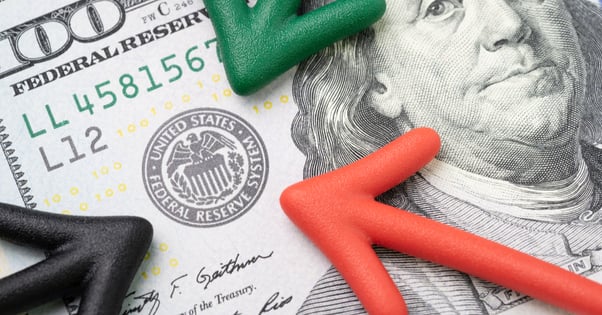Jerome Powell has a goal that is bigger than the bond market’s near-term inflation concern.
In perhaps his most forthright press conference since taking the helm of the central bank three years ago, the Federal Reserve chair laid out some critical messages for investors who have been propelling bond yields higher on the bet inflation would eventually force his Fed to tighten monetary policy faster than it’s been indicating.
He’s not unduly concerned by rising yields, control of monetary policy communications resides with him and he’s willing to run the economy hot to help it recover from fallout of Covid-19. Asked directly during his Wednesday press conference if he was concerned about the increase in Treasury yields, Powell said the financial conditions remain “highly accommodative.”
It was a clear signal that he wasn’t going to bother with the emotional swings over inflation risk that’s obsessing investors. Powell has an explicit strategy to reflate the economy and he doesn’t think this is going to be easy after decades of low inflation. Therefore, he wants to see actual data and he isn’t persuaded that inflation inertia, where today’s price changes look a lot like yesterday’s, is about to change.
“The fundamental change in our framework is that we’re not going to act pre-emptively based on forecasts for the most part and we’re going to wait to see actual data,” Powell said. “I think it will take people time to adjust to that and the new practice, and the only way we can really build the credibility of that is by doing it.”
Powell repeatedly played down the Fed’s quarterly Summary of Economic Projections. “The SEP is not a committee forecast. It’s not something we sit around and debate and discuss and approve,” he said, noting that the dot plot of interest-rate forecasts submitted by each of the Fed’s 18 policy makers was “not meant to actually be a promise or even a prediction of when the committee will act.”
The forecasts display a policy response, if other assumptions made by individual officials turn out as expected. But forecasting a rate increase three years out, as seven Fed officials did, “is highly uncertain,” Powell dryly noted, adding that no one had much experience on predicting how the economy will recover after a pandemic.
Finding the dots
All of these comments intentionally devalued the policy signal of the dots. They also raised a question: If guidance on the timing of eventual tightening doesn’t reside in the dot plot, where does it?
Powell said that will be a judgment, or in other words, a committee consensus that Powell himself is in charge of forming. “Until we give you a signal, you can assume we are not there yet,” he said.
Will Powell be reappointed?
Taking command of the message bestows an Alan Greenspan-like, indispensable quality on Powell at a time when Fed communication is critical for financial markets, and as debate builds on whether he’ll get a second term when his current stint as chair ends in February.
President Joe Biden has yet to indicate if he’s open to keeping him or picking someone else. Derek Tang, an economist at LH Meyer/Monetary Policy Analytics in Washington commented, “Powell would like to be reappointed and the Democrats have kept the door open. If the Democrats were trying to coax a favourable policy out of Powell, they have kept him in play but not made him a sure thing. It is a very sophisticated job negotiation.”











